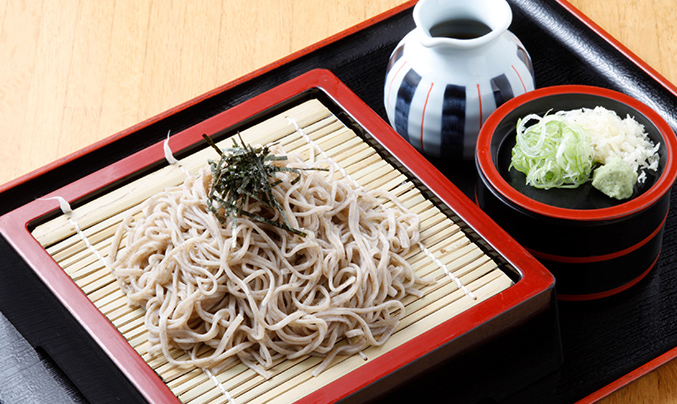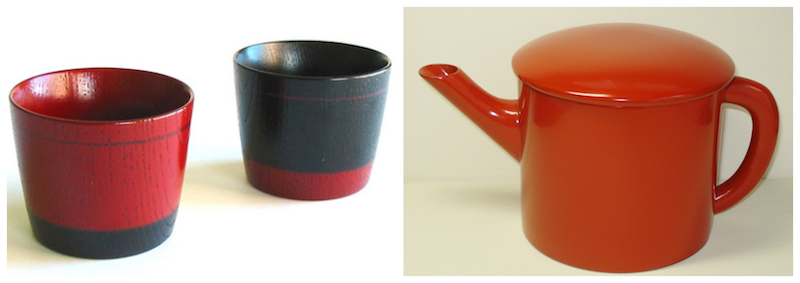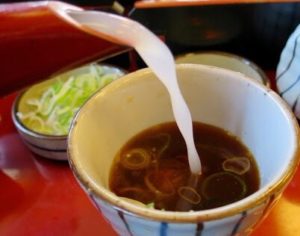
COLD NOODLES: Part TWO
そば・蕎麦・SOBA
Most soba noodles are made from 80% soba (buckwheat) flour and 20% wheat flour; these are known as hachi wari soba (literally 80% soba). If you wish to make your noodle dish gluten-free you will need to buy jū wari soba, noodles made with 100% soba flour. Read labels carefully. To help you, DOWNLOAD this Guide to cooking Japanese SOBA Noodles


UTENSILS for SERVING JAPANESE SOBA NOODLES
Soba is most often served on ZARU 笊 plates lined with a slatted mat that helps to drain away excess moisture. Nutrient-rich soba yu water leftover from cooking soba is served in special long-spouted pitchers. Dipping sauce in soba choko cups is thinned with this water and drunk as a broth after eating the noodles.
Make your own CLASSIC Japanese ZARU SOBA & MORI SOBA

The origins of SOBA
Curious about the origins of soba noodles? Read about it in my July 2020 Taste of Culture newsletter.




